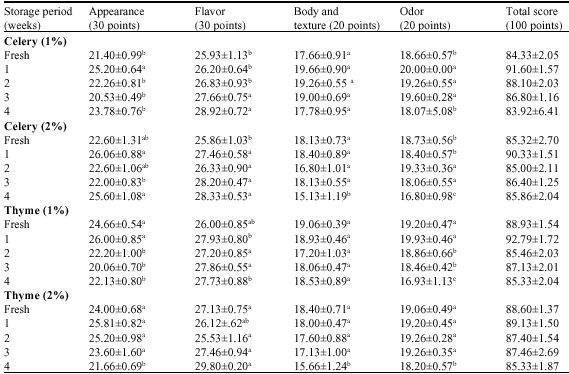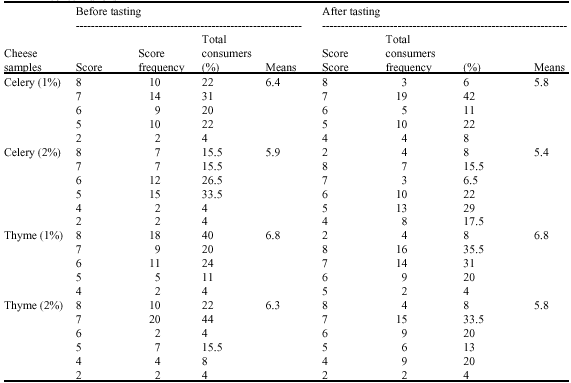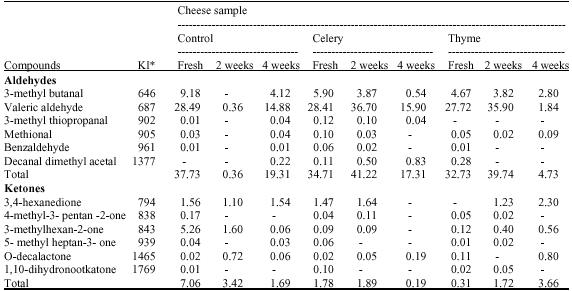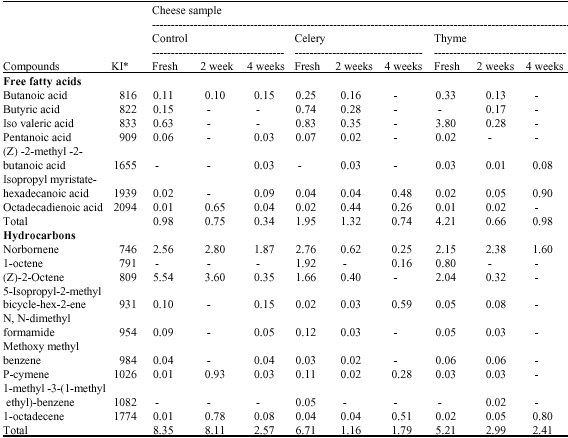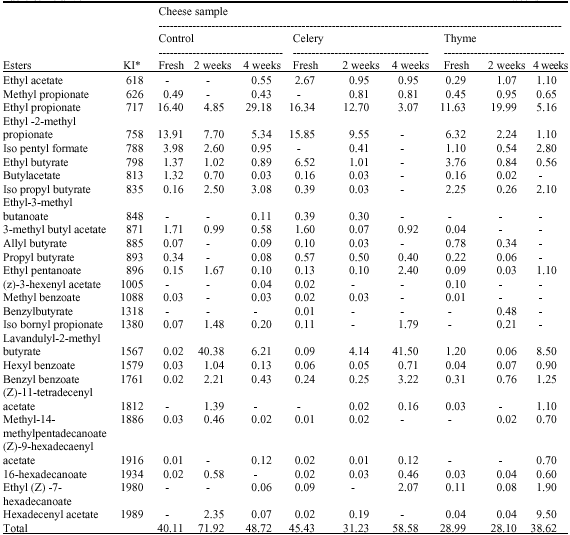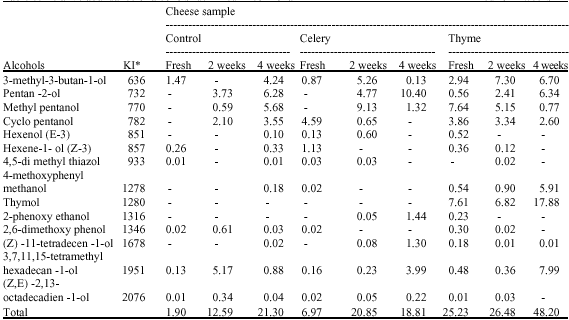Research Article
Sensory Evaluation and Related Volatile Components of White Herby Cheese
Department of Dairy Science and Technology, National Research Center, Cairo, Egypt
Faten L. Seleet
Department of Dairy Science and Technology, National Research Center, Cairo, Egypt
A.H. El-Ghorab
Department of Flavors and Aroma, National Research Center, Cairo, Egypt









